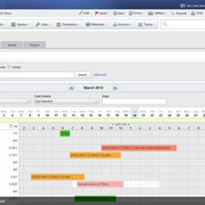Australian Securities & Investment Commission insolvency statistics for the 2017-18 Financial Year, published this month ASIC link, show that 1354 Australian construction companies entered external administration the 2017-18 FY. (According to the ABS, there were 371,599 construction companies registered in Australia in June 2017.) While this was the lowest number of construction industry insolvencies in the last five years, it represented 17.4% of total insolvencies across all industry sectors, just under the 17.7% five year average.
The construction industry represented the largest specific industry total (insolvencies) out of the 25 categories in the report, highlighting the inherent operational challenges to trading profitably. In its analysis of the key factors contributing to construction industry insolvency ASIC noted: (1) “Poor financial control including lack of records”, (2) “Poor management of accounts receivable”, (3) “Poor strategic management of business”, (4) “Inadequate cash flow or high cash use”, and (5) “Trading Losses”. Clearly the highly competitive, project based, construction business model combined with the constantly shifting business cycle in construction, requires a unique set of business tools.
We typically find the companies we encounter utilise a variety of “stand alone” industry tools for collaboration, document management, estimating/costing, field reporting, HSE, and resource management, in combination with a plethora of excel spreadsheets and an (ERP) accounting system. This “stand alone” tools, plus excel spreadsheet approach satisfies the requirements of individual departments within a company. However, it does not provide the data consolidation required to combine expenses, commitments, budgets and project schedules to enable real time financial analysis, forecasting and cash flow management. It also leads to a great deal of double entry of data, Project Manager and then back office, and inefficiencies as people try to get a complete picture of either individual projects or across the entire business.
At IPM, we believe projects are best managed with a tool, which sits between your estimating and scheduling tools and your (ERP) accounting system. The tool should also provide a basis for you to collaborate, manage documents, control costs, and manage field activities, HSE and resources. This approach, including the advantages of native integration to Microsoft Dynamics 365 CRM, Microsoft Office 365, Power BI and SharePoint, optimize efficiency and enable the highest standard of real time financial reporting and planning required to meet the unique requirements of the construction industry.
Typically, in an IPM demonstration our clients identify 4 or 5 tools which would be replaced by an IPM deployment, and the benefits and efficiencies are apparent.
Contact me for an obligation free internet demo at info@IPMGlobal.net or go to www.IPMGlobal.net .




















